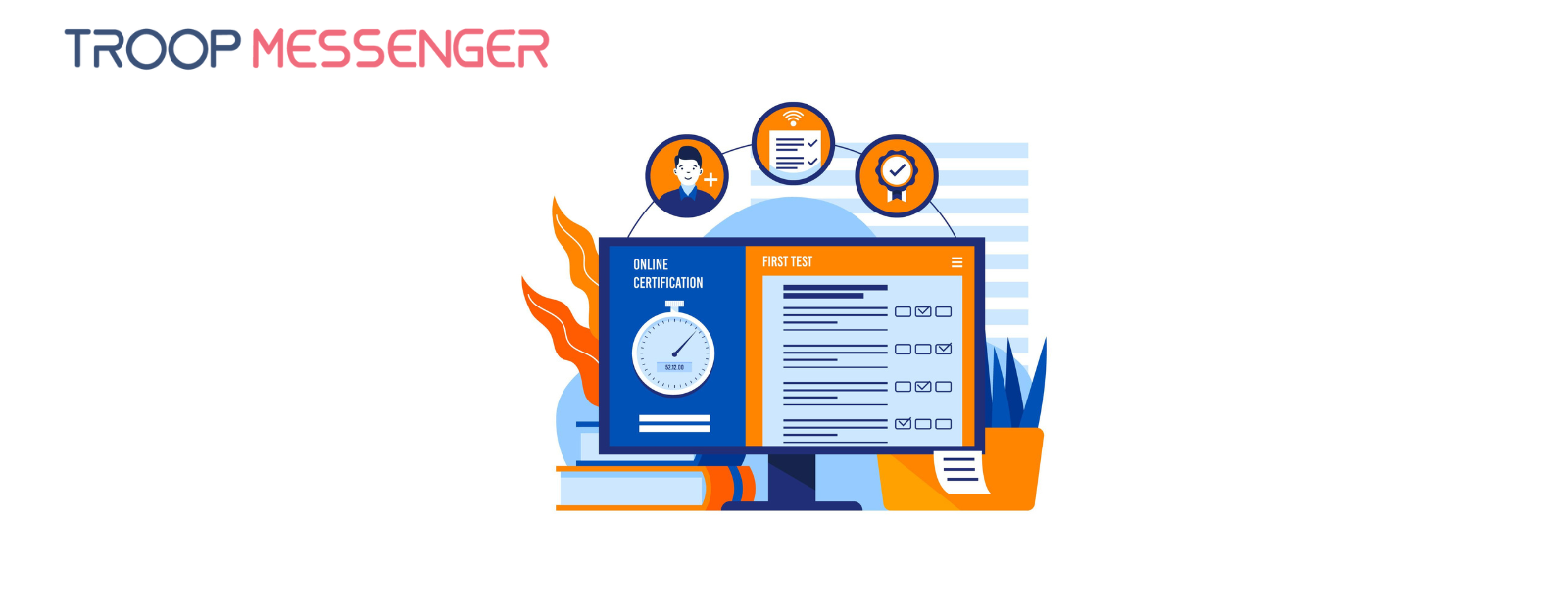Connect with us

Why Supporting Employee Wellbeing is Key to a Thriving Remote Workforce
There are 3 billion working people globally, with 40 percent expressing happiness in their jobs, which indicates that roughly 1.8 billion individuals are not feeling fulfilled at work, and this discontent can create ripples that affect not only those employees but also the organizations they represent.
Happiness at work is a genuine performance booster, and organizations with high levels of employee happiness report three times the revenue growth compared to their less-content counterparts. Companies with engaged employees also tend to outperform the stock market by a factor of three, which shows a compelling correlation between workforce satisfaction and financial success.
What’s also worthy of consideration is that these organizations experience employee turnover that is half that of those with unhappy employees, which saves them the high costs associated with hiring and training new staff.
So what are some key factors that company leaders can put in place for improved employee wellbeing?
The Importance of Flexibility
When companies provide flexible schedules, employees can adjust their work hours to accommodate personal commitments, which leads to higher job satisfaction and productivity. This flexibility can make a world of difference, as employees no longer feel the pressure of choosing between work obligations and family responsibilities. The result is a happier workforce that is more dedicated to their tasks and leads to improved performance overall.
Also, encouraging time off goes hand-in-hand with promoting work-life balance. When employees take the time they need to recharge, they return to their roles with renewed energy and focus. The end result? A culture where employees feel supported and valued, which translates into better collaboration, diminished burnout, and long-term commitment to the organization.
Mental Health Support
When employees have access to resources like counseling services and stress management programs, it can make a huge difference as it can help them cope with the pressures of their jobs. This kind of support helps individuals manage their mental health and also helps organizations save money by reducing absenteeism and boosting productivity.
In other words, if employees felt that their mental health was a priority, they would be more likely to engage in open conversations about it and create a culture where seeking help is seen as a strength rather than a weakness. This proactive approach helps remove the stigma that often surrounds mental health issues, and allows everyone to focus on their wellbeing without fear of judgment. And when people feel supported, they tend to bounce back stronger and perform at higher levels, without the heavy burden of stress dragging them down.
According to recent reports, investing in mental health support can yield a return of $4 for every $1 invested, thanks to decreased absenteeism and increased productivity. In other words, when mental health is prioritized, companies can create an environment that not only brings about collaboration and innovation but also leaves employees feeling satisfied and valued.
The Path to Comfort and Productivity
Creating a safe workspace is more than just making things look “nice”; it comes down to building an atmosphere where employees feel secure and excited to do their best work. Think about ergonomic furniture—it’s not just a fancy addition, but a must-have that keeps everyone comfortable and helps prevent workplace injuries.
In other words, when people are set up with the right tools and furniture, they can really get into their tasks and produce amazing work. And, when you encourage a positive atmosphere filled with open communication, respect, and a little appreciation, it can really boost morale and engagement among employees. People do their best in environments where they feel valued and acknowledged, and this kind of supportive vibe leads to better teamwork and sparks creativity, allowing ideas to flow freely.
Living Insurance
Companies that offer living insurance as part of their employee wellbeing program tend to see higher satisfaction rates because it shows employees that their employers genuinely care about their lives beyond just work.
Living insurance isn't just about protecting against unforeseen circumstances; it gives peace of mind and a sense of security, and reassures employees that they are supported if something unexpected happens. Living insurance funds can be used for emergencies, medical expenses, or retirement income - it creates a feeling of safety that allows employees to focus on their roles without the constant worry about what might happen in the future.
When people feel looked after, they’re more likely to be engaged, loyal, and productive, creating a positive work atmosphere. The reason why it matters so much is because happy employees lead to better performance, reduced turnover, and ultimately contribute to a healthier bottom line for the company.
Feedback Mechanisms
One of the most crucial elements to making sure of employee well-being is establishing effective feedback mechanisms, where the voice of every team member can be heard and valued, as it enables them to share concerns, offer suggestions, or simply express how they’re feeling about their workload and workplace culture without any fear of repercussions. When there is an open dialogue, companies can make informed decisions that truly reflect the needs and aspirations of their workforce, which makes employees feel appreciated and engaged in their jobs.
In other words, when workers know their opinions matter, it encourages a sense of belonging and community, even from afar, and in turn that closely-knit vibe boosts morale, productivity, and overall happiness. Regular pulse surveys, virtual suggestion boxes, and one-on-one check-ins can effortlessly facilitate this crucial connection, providing opportunities for team members to share their thoughts and feelings about their remote work environment.
Workload Management Tools
In a remote working environment, where the lines between home and work can get a bit fuzzy, having the right workload management tools in place is really important for keeping employee well-being front and center, as these handy tools help team members stay on top of their tasks, deadlines, and responsibilities while also making it easier to find that all-important work-life balance. These tools empower employees to prioritise their daily activities and set realistic goals that keep burnout at bay.
When a team uses shared calendars, project management apps, or time-tracking tools, it can streamline the workflow and keep everybody connected while working together toward success without the pressure of extra stress.
Diversity and Inclusion Initiatives
When employees see that their distinct backgrounds add to the richness of the collective experience, it encourages a sense of belonging that builds collaboration and friendship, which makes remote work not just about hitting targets but about forming meaningful relationships that can last a lifetime.
Initiatives such as inclusivity workshops, mentorship programs, or celebrations of cultural diversity allow team members to share their stories and learn from one another while building a stronger emotional connection to their work and colleagues.
Celebrating Milestones
It’s also important not to overlook the importance of celebrating milestones in order to create connection and nurture a sense of accomplishment among team members, as recognising individual and collective achievements—whether it’s a work anniversary, project completion, or personal triumph—adds an uplifting ripple of positivity that strengthens relationships and reinforces the feeling that employees are valued and part of something larger than themselves. Whether it's small tokens of appreciation sent to employees' homes, virtual applause at team meetings, or dedicated celebrations on social platforms, the act of acknowledging contributions boosts morale and motivates everyone to keep striving for success, knowing their hard work has been noticed and appreciated.
Promoting Innovation Days
To truly elevate employee wellbeing in a remote workforce, organisations should prioritise dedicated time for innovation days or personal projects, which allows employees to step away from the grind of their daily tasks to pursue their own creative ideas, passions, or initiatives that bring them joy and inspiration.
In other words, when your team gets to dedicate a day to brainstorming sessions, new ways to enhance company processes or working on personal side projects that they’ve always dreamed of pursuing, it creates an environment of innovation but also allows individuals to grow both personally and professionally.
Digital Detox
In our super-connected, always-on world, it's all too easy to get stuck in the never-ending cycle of emails, video calls, and notifications that keep us glued to our screens, which is why encouraging employees to take regular breaks through a “digital detox” is such a big deal for boosting wellbeing and productivity. It’s quite amazing to experience the relief of stepping away from the blue light, even just for a short while—those moments can work wonders for clearing your mind, refreshing your energy, and allow you to reconnect with what truly matters, like taking a stroll outdoors, doing a few stretches, or simply enjoying a cuppa while listening to the sounds of nature. When leaders encourage these screen breaks, they help team members combat the physical fatigue that comes from staring at screens all day, and they also gives them a little nudge to recharge their mental batteries, which can lead to sharper focus and a burst of creativity once they jump back into work mode.
Digital detoxing can also spark great conversations among colleagues, as sharing tips, fun activities, or even just joined moments of downtime can strengthen team bonds, reminding everyone that they’re not alone in this remote working journey. Also, these breaks usher in a culture of mindfulness, where employees learn to tune into their bodies and minds, and recognise when they need a moment to step back and breathe, rather than push through the fatigue.
Happy, healthy employees are more productive, engaged, and loyal, which ultimately benefits everyone—from individual team members to the company as a whole. When leaders focus on key areas like mental health support, work-life balance, and creating a positive work environment, they can build a culture where everyone feels valued and motivated.
Conclusion
Supporting employee well-being is crucial for creating a sustainable, engaged, and productive remote workforce. When companies emphasize flexibility, mental health resources, and a healthy work-life balance, employees feel valued and motivated, which translates into better performance, reduced turnover, and a stronger sense of community.
Prioritizing well-being not only enhances individual satisfaction but also drives collective success. Healthy, happy employees are more resilient, innovative, and committed to their roles, helping the organization thrive and build a positive, loyal culture that benefits everyone.








